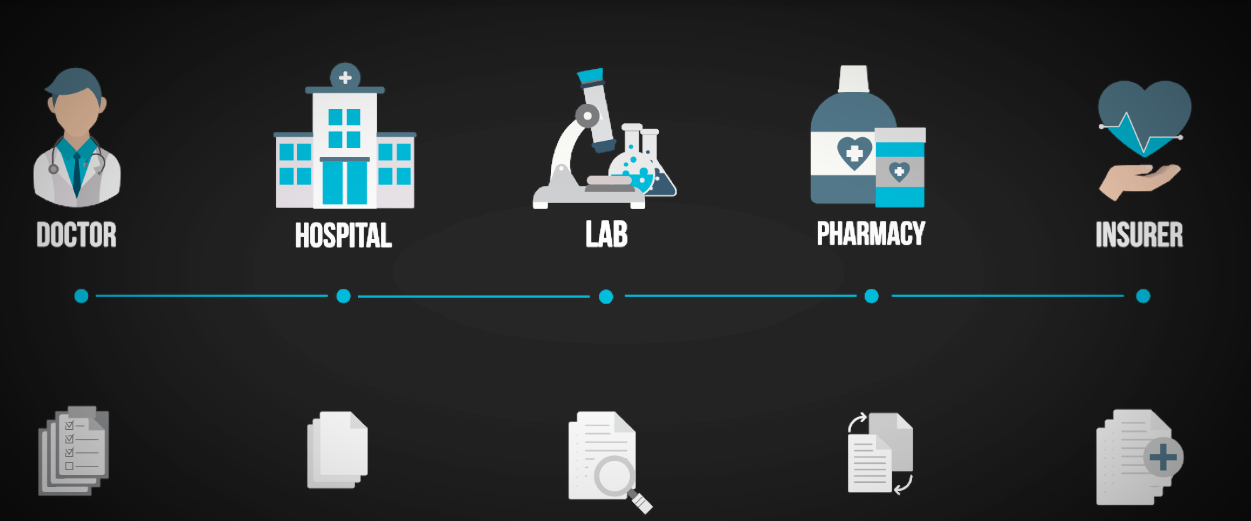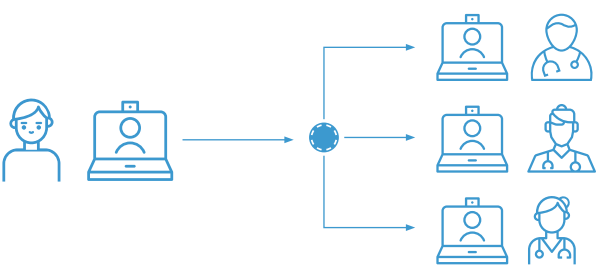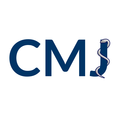Upgrading our digital health infrastructures with blockchain-based records

In recent decades, the medical profession has come under immense pressure to maintain effective services for its changing patient demographic. Namely, an aging population with increasingly complex chronic diseases requiring multifarious care [1]. There is no indication the problems we are increasingly facing today are to change without urgent innovation within the NHS on many fronts. Simply put, the NHS must implement resourceful ways to streamline its services.
Here we outline from first principle a new way to store and utilise patient records, based upon blockchain technology, for potential wide-spread use within the NHS. This method aims to provide users with fully secure and validated access to their complete health record.
1. Fragmented Health Data
When you see your doctor, how much of your medical history do you expect them to see? Clearly, we expect them to have a record of prior appointments at that very location. But do you expect them to see the record of all your prior diagnoses during previous hospital admissions? The treatment you received? To see results of all your tests? How about when abroad? Will they have a record of your allergies? Or your vaccine history? We soon realise that barriers quickly arise when attempting to access the entirety of your health record. This is fundamentally due to inadequacies in our NHS digital infrastructures to deal with health records in an effective manner.
It is notable that before recent decades this was not a major issue; patients have historically been relatively stable in their location and even when not, simple information could be adequately transmitted via physical paper notes from one place to the next. Yet in modern times this is no longer possible. We all require medical services not only at our home address, but across many locations both at home and abroad. Moreover, much of the population have complex medical histories not easily recalled without objective verifiable records [2]. We have advanced as a population very quickly, but our technological capabilities are yet to keep up. Looking forward, it is our duty to build on top of blueprints not initially designed for the purposes we now need them to serve.
Why do health data accessibility issues such as these exist? Currently, patient records across the UK are fragmented across many separate data storage units known as \textit{silos}. Silos are maintained by different institutions with differing protocols and underlying operating systems. Imagine your own medical history. Any formal meeting you have had with a healthcare professional would have led to the encounter being documented on their respected system. This digital record is stored on their local silo. As a result, when considering the global picture of your record retrospectively, it is divided across many gatekeepers depending on where you have been throughout your life (i.e. GPs, occupational health at employers, hospitals, specialist care centres and so on). Each gatekeeper’s record is likely incomplete and overlapping with records kept elsewhere.

Figure 1: Data is currently held across isolated silos that are not easily accessible.
This method of storing historical records – fragmented across isolated silos – leads to many non-trivial problems permeating throughout the healthcare system. For example, patient care is compromised due to inaccessibility of an accurate and complete healthcare record. Envision a patient with a chronic disease requiring an urgent hospital admission outside of their local hospital. As their records are stored at a different silo to their admitting hospital, doctors are required to request this important and sensitive information via telephone or fax. This clearly delays the effective provision of treatment and leads to inefficiency in the service.
The externalisation of record storage to silos not only leads to issues for doctors. Patients are kept fundamentally uninformed as to their own health record; disempowering individuals to self-manage effectively. Whilst we commonly advocate for a patient-centred approach in healthcare, it is unfortunate that our digital infrastructures – without which much of the health system would not be able to function – does not reflect this value. We simply do not promote patients to feel like a major influencer in their own recovery, which they undoubtedly are.
We must strive towards efficient solutions to these problems to improve patient outcomes and service efficiency. Here we outline an original way in which we may attempt to do so.
2. Digital Health Records through Blockchains
The public awareness of blockchain technology has grown rapidly over the last several years, most prominently for its role as a peer-to-peer financial instrument [3].
A blockchain is a data structure that, instead of being held by one institution, is distributed across a network of computers (also known as \textit{nodes}) that each keep an identical version of the “truth”. When an update to the record is requested, this is broadcasted to all nodes in the network which collectively either accept or decline the requested additions to the record. If accepted, the distributed record synchronises across all nodes and this record is made permanent going forward. The entire history of a blockchain is therefore perfectly immutable.
Records are collected into lists, known as blocks, which are cryptographically linked to subsequent blocks over time in a linear chain; hence the term blockchain. Public blockchains are those that require no permission to join the network whereas private blockchains require permissioned access. A more technical explanation of how blockchains function are not addressed in the article but can be found elsewhere and we recommend reading further \cite{bib4, bib5, bib6}.
Blockchains in general have specific advantages and disadvantages compared to traditional models for record keeping. Their main advantage is that they reduce the need to trust a third-party to keep a valid unalterable historical proof of all transactions. This is because the network, not a single node, generates a consensus to determine ongoing additions to the record. As a result, instead of trusting a central organisation to validate the record and keep it in your name, the blockchain network validates the record and users have sovereign ownership of their data. Further, by their nature of having block content linearly dependent on prior blocks ran by geographically distributed nodes, blockchains provides a form of security not possible under traditional methods. However, there are important disadvantages of public blockchains rendering them of little use in many circumstances. For example, they are ill-suited to achieve the storage of exceptionally large datasets as they require the replication of data across all nodes in the network. Moreover, due to being public it is not suitable that they keep sensitive information.
How does this apply to patient records? Customised private blockchains provide an extremely useful intermediary to maintain the advantages of public blockchains for data storage (complete user sovereignty, distributed consensus generation and immutability) without the aforementioned disadvantages (storage requirements and privacy) that can be used in the NHS. Firstly, complete patient records need not be stored on the blockchain itself – therefore mitigating issues regarding data storage capabilities. Instead, only a pointer of the data-silos location and record need be inputted to the blockchain. These pointers may act as a soft link directly connecting users to their own data. For example, if you have been to six medical institutions in your lifetime within the UK (i.e. a mixture of GPs and hospitals), the blockchain may keep pointers to these six locations on the blockchain to give real-time data access, yet the data is not itself stored on the blockchain. Whilst preventing an otherwise clear data-storage problem, this also acts to maintain upmost (GDPR approved) privacy. Furthermore, only parties with permission to join the blockchain are allowed. A range of parties may be involved with such a distributed blockchain to facilitate NHS record keeping, including governmental, hospital, general practice and NGO institutions.

Figure 2: Blockchains may innovate the way we currently store data to enable patient records to be united and given to patients.
This proposed innovation to the way in which we handle data in the NHS allows for patients to access their UK health records at any time and any place with the full knowledge that it is valid, private and secure. All data is fundamentally detached from any one institution and unites the entire medical record of that individual. This opens a host of potentials not previously possible.
3. Changing Healthcare for a Changing Population
NHS England’s Five Year Forward View, made in 2014, committed to making all patients’ records “largely paperless” by 2020 [7]. Whilst efforts like this are laudable, we must consider the underlying substructure to such efforts. It is not sufficient to vaguely state that we must update our use of technology in the NHS. Instead, we must propose specific solutions to specific problems and be open to trial such attempts. It is our suspicion that the way health data is currently fragmented will lead to major limits to the extent in which we may be able to fully capitalise on the digital transformation of health systems in the NHS. Alternatively, blockchains offer a major opportunity to take a step forward in how we manage health data. This is the formal aim of Medicalchain [8].
Medicalchain is a UK-headquartered, global organisation focused on using customised permission-based block-chains to enable patient-centric, borderless healthcare. Medicalchain are attempting to implement what has been discussed in this article and are currently piloting their new platform at the New Malden-based Groves Medical Centre with the intent to launch to the general public in late 2018 [9]. In the pilot, Medicalchain are facilitating patients to have an electronic health passport that allows patients to digitally access their entire health record via their electronic device. Furthermore, they are trialling the use of MyClinic.com which is a Medicalchain application connecting patients through a video consultation with a network of healthcare practitioners and providers whose services can be purchased.
It is important to recognise that the ability to have complete access to your own health record enables services such as MyClinic.com – which patients may choose to engage with or not – to exist. There are a great number of possibilities for future services, currently unknown, to branch out into and these will likely have beneficial knock-on effects in ways we cannot currently predict.
For example, one way this might be to beneficial is within scientific studies; where researchers could request important health data from individuals on a case-by-case basis for their analyses. Amidst a time where people are becoming more and more weary of how their data is used and abused in healthcare [10], we may be able to generate an emergent form of ethical scientific enquiry where patients feel more in control of who sees and does not see their data. Another way might include insurance, where patients may allow insurers to have some access to their information so that automatic claims on their policies may be initiated without having to do tedious manual paper-work themselves.
Regardless of the potential future area for progress, it is clear that blockchains applied to health records unlocks one of the NHS’s great assets – its data – in an ethical way that fundamentally empowers patients.
4. Conclusions
The 21st century provides unique tests to the NHS whereby the critical economic climate challenges an obligation we have to provide the best possible healthcare to all. Yet, as technology and science progresses in step with the development of new tools and paradigms, the possibility to ask new questions is made possible. These new questions lead to innovations previously unthought-of. This dynamic is especially apparent when reflecting upon the recent progress that has been made relating to blockchain applications to digital health records. We can be hopeful that the medical profession will develop in turn with new knowledge, implementing practices that utilise technological methods such those pioneered by Medicalchain to improve the health of many in the future. This is a very exciting prospect.
5. Conflict of Interest
The Authors are employees of Medicalchain, and their opinions may represent those of the company.
6. References
[1] Andah E, Ahsan M, Lee R, Brewin E, Ahmed K. The Social Network: a concept to improve the quality of life for an ageing population while reducing loading on the NHS. BMJ Innovations. 2018;4(2):51-53.
[2] Tran J, Norton R, Conrad N, Rahimian F, Canoy D, Nazarzadeh M et al. Patterns and temporal trends of comorbidity among adult patients with incident cardiovascular disease in the UK between 2000 and 2014: A population-based cohort study. PLOS Medicine. 2018; 15(3):e1002513.
[3] Nakamoto, S. Bitcoin: A Peer-to-Peer Electronic Cash System. 2008; Available from: https://www.bitcoin.org.
[4] Luther W, Olson J. Bitcoin is Memory. SSRN Electronic Journal. 2013.
[5] Ammous S. Blockchain Technology: What is it Good for? SSRN Electronic Journal. 2016.
[6] Puthal D, Malik N, Mohanty S, Kougianos E, Yang C. The Blockchain as a Decentralized Security Framework [Future Directions]. IEEE Consumer Electronics Magazine. 2018;7(2):18-21.
[7] NHS England. Personalised health and care 2020: using data and technology to transform outcomes for patients and citizens. A framework for action. Leeds: NHS England. 2014.
[8] Own your own health. Medicalchain. 2018. Available from: https://www.medicalchain.com.
[9] Blockchain-enabled telemedicine service to be piloted with London patients. Digital Health. 2018. Available from: https://www.digitalhealth.net/2018/05/blockchain-enabled-telemedicine-service-to-by-piloted-with-groves-medical-patients.
[10] Revealed: Google AI has access to huge haul of NHS patient data. NewScientist. 2016. Available from: https://www.newscientist.com/article/2086454-revealed-google-ai-has-access-to-huge-haul-of-nhs-patient-data.
Article photo credit: panumas nikhomkhai
- Log in to post comments










